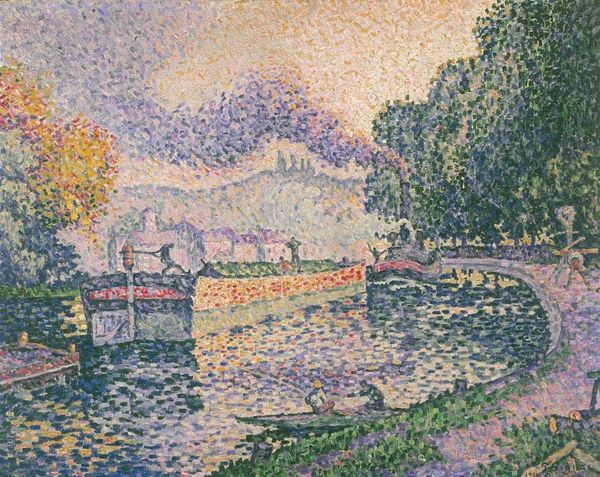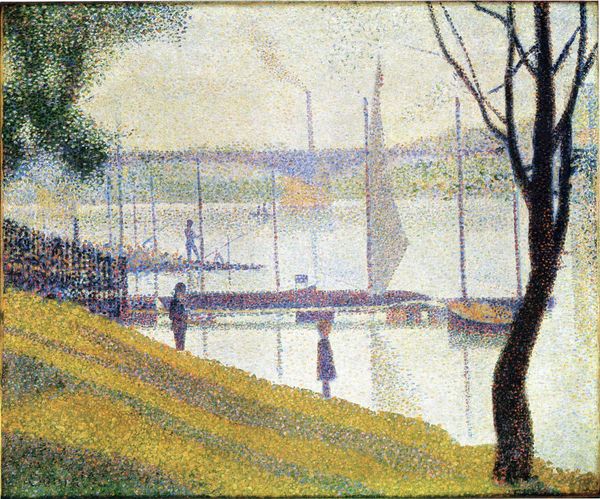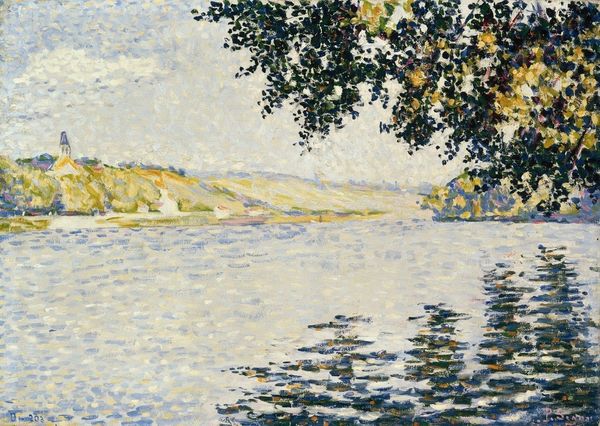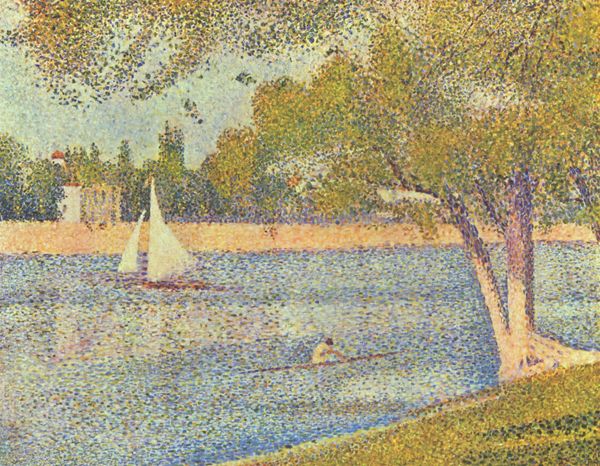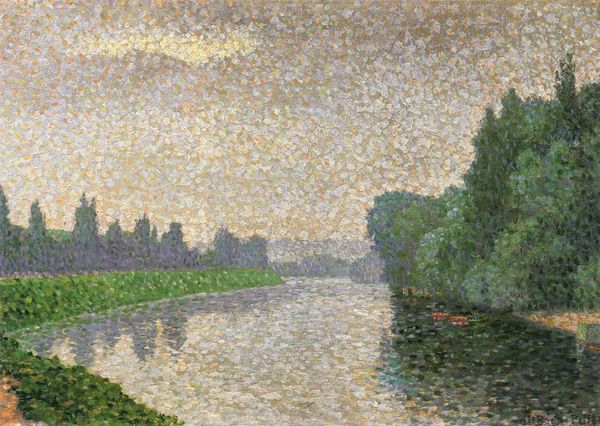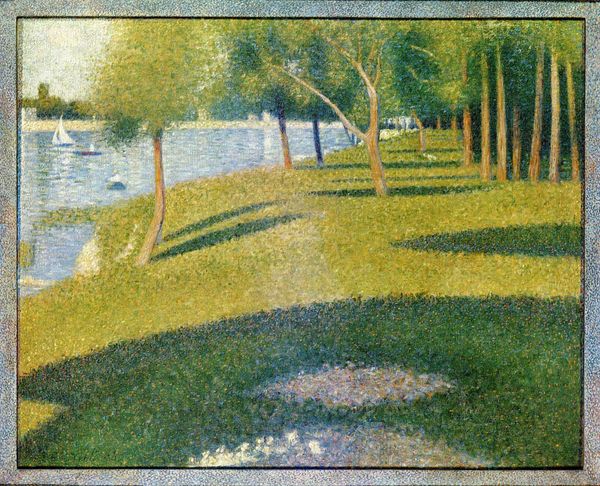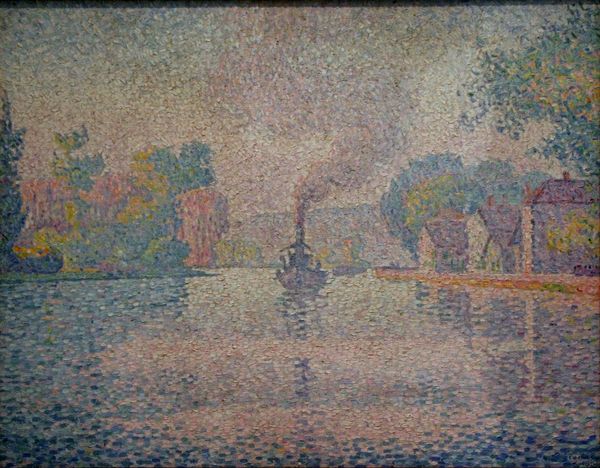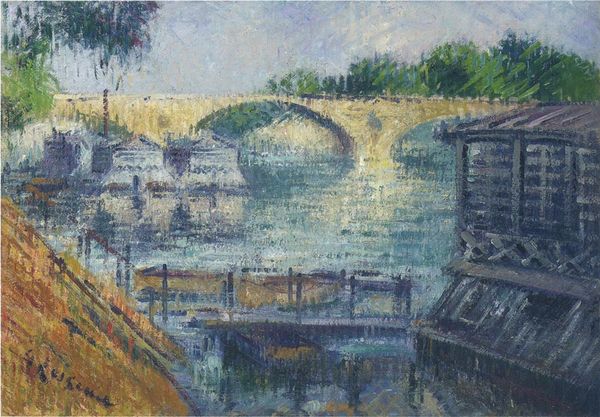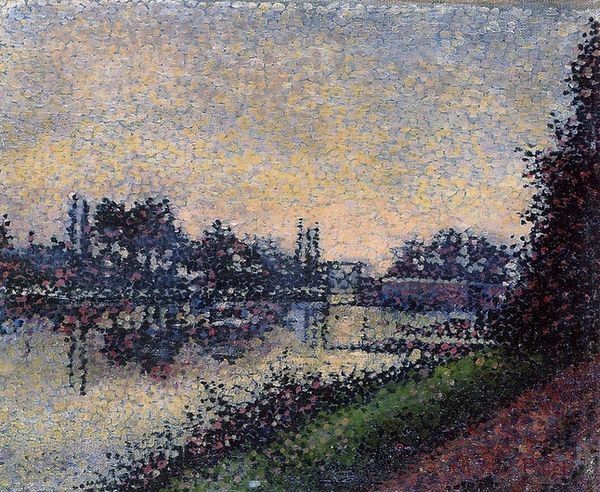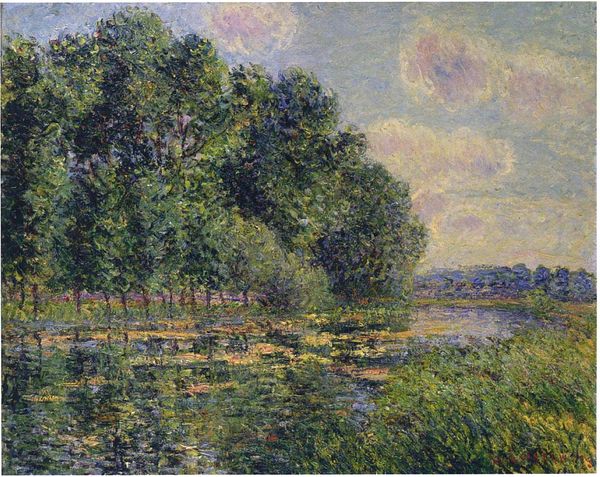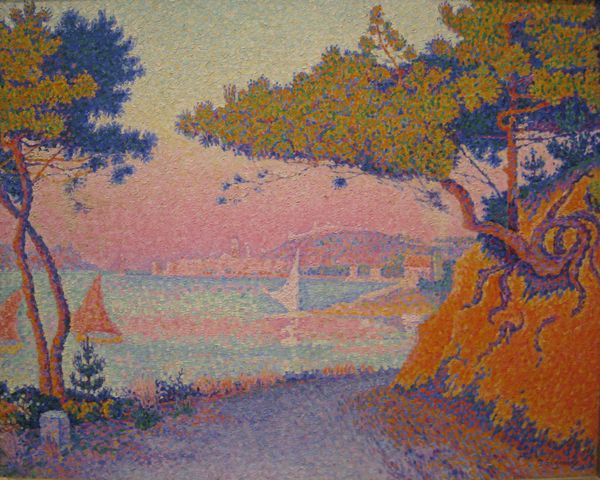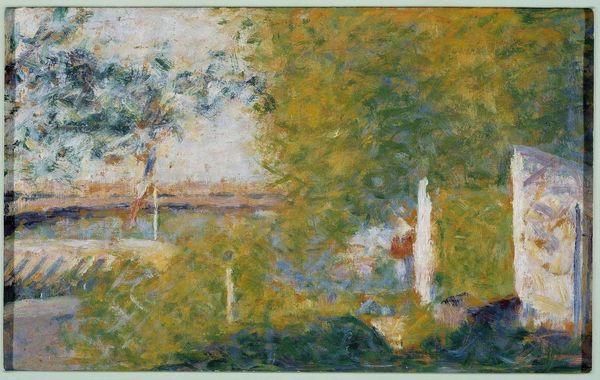
painting, oil-paint
#
painting
#
oil-paint
#
neo-impressionism
#
landscape
#
oil painting
#
modernism
Copyright: Public Domain: Artvee
Editor: Here we have Georges Seurat's "Gray Weather, Grande Jatte," painted between 1886 and 1888 using oil paint. The entire scene feels muted, a calm stillness achieved through this meticulous pointillist technique. What do you see in this piece, beyond just the surface? Curator: I see a quiet revolution. Seurat's technique, of course, is striking, but it’s important to consider what he’s capturing: a leisure scene, the burgeoning middle class enjoying the Seine. But are they really? Look closely – the figures lack individuality. This wasn't simply a landscape. It subtly challenges the societal norms of leisure and class representation during the Industrial Revolution. How does that understanding of social commentary influence how you perceive the painting? Editor: I hadn't considered the potential commentary! The uniformity of the dots, perhaps mirroring the conformity expected of the rising bourgeoisie? I was initially drawn to the stillness, but now I see a certain…tension. Curator: Exactly. And this tension is key. It reflects the complexities of a society undergoing massive change. Seurat situates his painting within debates on modernity and the experience of living in an era defined by its new class dynamics and new manufacturing capabilities. Think about other Impressionist scenes of leisure – Renoir's bustling gatherings, for example. How does Seurat's approach differ, and what does that tell us about his social critique? Editor: Renoir feels celebratory, whereas Seurat feels…observational, almost clinical. A deliberate detachment. This wasn’t just about capturing light; it was about dissecting society. I will never look at a landscape the same. Curator: Precisely. And that, in essence, is the power of art. To question, to challenge, and to reframe our understanding of the world around us.
Comments
No comments
Be the first to comment and join the conversation on the ultimate creative platform.
